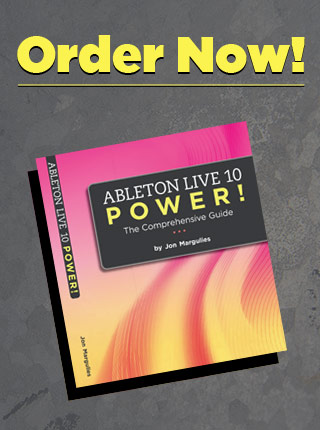OK, I think it’s time to move on from warping for a while. Today, we’ll pick up where we left off, though and discuss another automatic technique for changing the timing of a loop: the groove engine. In this tip, we’ll cover the basics. To apply a groove to a clip, hit the hot-swap button […]
USING GROOVE TO QUANTIZE
The groove engine can do two things: change the timing and dynamics of your clips. The more familiar you are with manually playing with timing and volume variations, the more sense the groove engine will make to you. In this tip, we’ll look at using the groove engine to do the simplest timing change: quantization. […]
UNDERSTANDING SWING
A simple and very common use of the groove engine is to apply a shuffle or swing feel to a clip. Above are several variations of a 1/16 note swing. Before getting into using it, let’s define what that means. If you apply 1/16 note swing to a clip, you are delaying every other 1/16 […]
ADJUSTING GROOVE TIMING
Even though Live offers a whole bunch of different swing feels in the groove library, I generally don’t mess with them. Instead, I mostly use the one called Swing 16-99 – not because it’s the feel that I use in my tracks, but because it’s the most flexible. Allow me to explain. When applied to […]
INSIDE THE GROOVE
To get deeper into understanding Live’s groove engine, you have to be clear on what’s inside the groove files in the Library. Fortunately, that’s really easy. Just grab a groove out of the browser, drag it into the Session view and drop it into a MIDI track. Yup. It’s just a MIDI clip. Take a […]
COMMIT IT
The other way to really see how a groove is changing your clip is to use the Commit button: In the case of a MIDI clip, this will simply move the notes in your clip to the locations specified by the groove, much the way Live’s Quantize function moves notes to conform to a grid. […]
KNOW YOUR VELOCITY
Just like Timing, there’s also a control in the Groove Pool to determine how much of a groove’s velocity variations are applied to your clips. Remember that for MIDI clips, Velocity is just a standard MIDI parameter, so unless the instrument is configured to map velocity to volume (or some other parameter) messing with this […]
A FUN FACT ABOUT GROOVE VELOCITY!
Here’s a Fun Fact about groove velocity: when you commit a groove to an audio clip, the groove’s velocity settings get applied to the clip via a volume envelope. So, a groove that looks like this: …will create a volume envelope that looks like this: Factual! Fun!
GROOVING A GROOVE
OK folks. A few more things about groove and then we’ll move on. Earlier I talked about using the Groove Pool to quantize clips, but that’s only a piece of the quantization puzzle. A big reason that the Quantize setting exists is to apply pre-quantization. That means forcing a clip to conform to a strict […]
KINDLY ACTS OF RANDOMNESS
If there’s something more ironic than a human being using a computer algorithm to “humanize” a rhythm, I’d like to hear about it. In music, us human beings are primarily valued for our inaccuracy these days. One way that computers try to copy our haphazard ways is with randomization. In the Groove Pool, you’ll notice […]





